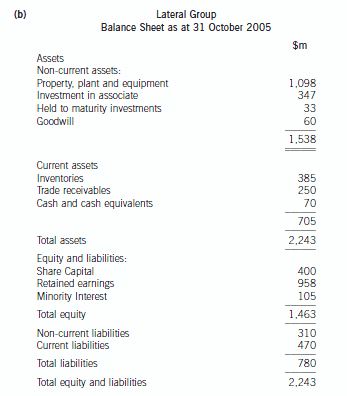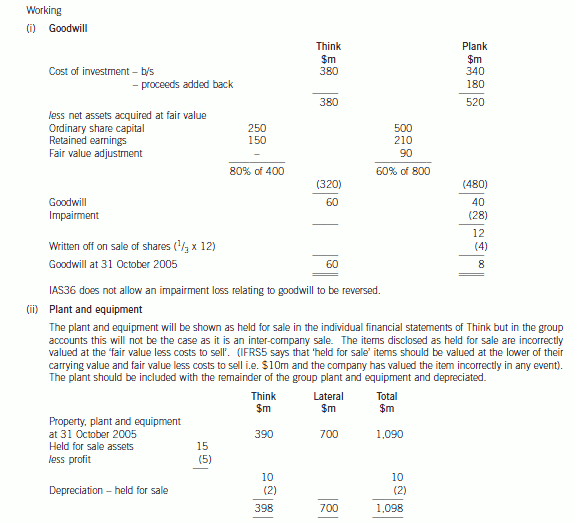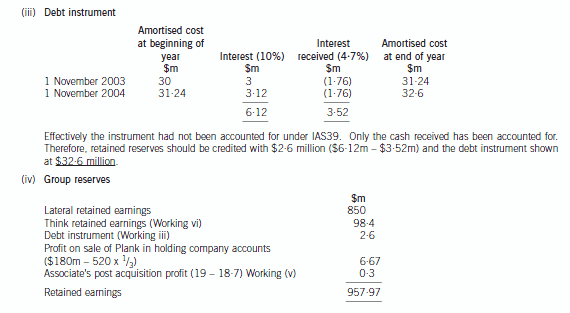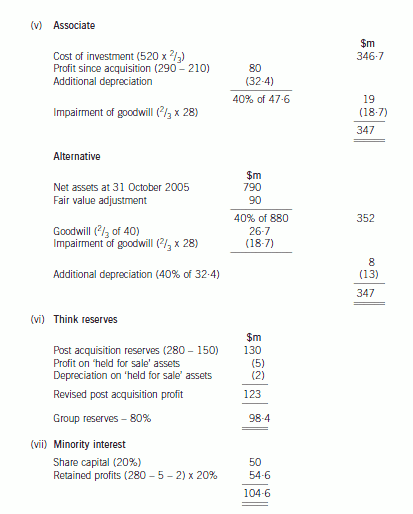2020年ACCA考试:会计师与企业基础经典习题(5)
发布时间:2020-10-14
为了帮助大家更好的备考ACCA考试,51题库考试学习网给大家带来2020年ACCA考试:会计师与企业基础经典习题(5),供大家练习,希望能够对大家有所帮助。
5.1 The following, apart from one
statement, are measures for encouraging upward communication in an organisation.
Which is the incorrect statement?
A Suggestion schemes
B Management by Walking Around
C Exception reporting
答案:C
5.2 In the radio signal model, which of the
following shows the correct order in which a message is transmitted?
A Feedback, Sender, Decoded message, Coded
message, Receiver
B Sender, Decoded message, Coded message,
Feedback, Receiver
C Coded message, Sender, Decoded message,
Receiver, Feedback
D Sender, Coded message, Decoded message,
Receiver, Feedback
答案:D
5.3 Which of the following communication
mechanisms is designed to improve upward communication?
A Notice boards
B Organisation manual
C Team meetings
D Team briefings
答案:C
5.4 What is the technical term given to a
fault in the communication process where the meaning of the message is lost \'in
translation\' from intention to language, or from language to understanding?
A Noise
B Redundancy
C Distortion
D Feedback
答案:C
5.5 According to Leavitt, which one of the
following communication patterns is the fastest in terms of problem solving?
A Y
B Circle
C Chain
D Wheel
答案:D
5.6 Which of the following best defines
coaching?
A Developing the individual by helping to
build on skills and overcome weaknesses
B Provision of one-way instruction on
formal tasks required to carry out the immediate job
C Offering career guidance in order to
maximise the individual\'s potential
D Provision of objective advice to overcome
the individual\'s personal problems
答案:A
5.7 Which of the following statements about
non-verbal communication is not true?
A Non-verbal cues can be used to reinforce
or undermine spoken messages
B People pay less attention to non-verbal
cues than to what is being said
C Non-verbal cues include tone of voice and
silences
D Non-verbal cues are a key source of
feedback
答案:B
5.8 In the context of work planning and
personal development planning, a SMART framework is often used as a checklist
of the characteristics of effective goals. What does the \'M\' in SMART stand
for?
A Manageable
B Measurable
C Motivational
答案:B
今天的试题分享到此结束,预祝各位小伙伴顺利通过接下来的ACCA考试,如需查看更多ACCA考试试题,记得关注51题库考试学习网!
下面小编为大家准备了 ACCA考试 的相关考题,供大家学习参考。
(b) Prepare a consolidated balance sheet as at 31 October 2005 for the Lateral Group in accordance with
International Financial Reporting Standards. (21 marks)




(b) You are the manager responsible for the audit of Poppy Co, a manufacturing company with a year ended
31 October 2008. In the last year, several investment properties have been purchased to utilise surplus funds
and to provide rental income. The properties have been revalued at the year end in accordance with IAS 40
Investment Property, they are recognised on the statement of financial position at a fair value of $8 million, and
the total assets of Poppy Co are $160 million at 31 October 2008. An external valuer has been used to provide
the fair value for each property.
Required:
(i) Recommend the enquiries to be made in respect of the external valuer, before placing any reliance on their
work, and explain the reason for the enquiries; (7 marks)
(b) (i) Enquiries in respect of the external valuer
Enquiries would need to be made for two main reasons, firstly to determine the competence, and secondly the objectivity
of the valuer. ISA 620 Using the Work of an Expert contains guidance in this area.
Competence
Enquiries could include:
– Is the valuer a member of a recognised professional body, for example a nationally or internationally recognised
institute of registered surveyors?
– Does the valuer possess any necessary licence to carry out valuations for companies?
– How long has the valuer been a member of the recognised body, or how long has the valuer been licensed under
that body?
– How much experience does the valuer have in providing valuations of the particular type of investment properties
held by Poppy Co?
– Does the valuer have specific experience of evaluating properties for the purpose of including their fair value within
the financial statements?
– Is there any evidence of the reputation of the valuer, e.g. professional references, recommendations from other
companies for which a valuation service has been provided?
– How much experience, if any, does the valuer have with Poppy Co?
Using the above enquiries, the auditor is trying to form. an opinion as to the relevance and reliability of the valuation
provided. ISA 500 Audit Evidence requires that the auditor gathers evidence that is both sufficient and appropriate. The
auditor needs to ensure that the fair values provided by the valuer for inclusion in the financial statements have been
arrived at using appropriate knowledge and skill which should be evidenced by the valuer being a member of a
professional body, and, if necessary, holding a licence under that body.
It is important that the fair values have been arrived at using methods allowed under IAS 40 Investment Property. If any
other valuation method has been used then the value recognised in the statement of financial position may not be in
accordance with financial reporting standards. Thus it is important to understand whether the valuer has experience
specifically in providing valuations that comply with IAS 40, and how many times the valuer has appraised properties
similar to those owned by Poppy Co.
In gauging the reliability of the fair value, the auditor may wish to consider how Poppy Co decided to appoint this
particular valuer, e.g. on the basis of a recommendation or after receiving references from companies for which
valuations had previously been provided.
It will also be important to consider how familiar the valuer is with Poppy Co’s business and environment, as a way to
assess the reliability and appropriateness of any assumptions used in the valuation technique.
Objectivity
Enquiries could include:
– Does the valuer have any financial interest in Poppy Co, e.g. shares held directly or indirectly in the company?
– Does the valuer have any personal relationship with any director or employee of Poppy Co?
– Is the fee paid for the valuation service reasonable and a fair, market based price?
With these enquiries, the auditor is gaining assurance that the valuer will perform. the valuation from an independent
point of view. If the valuer had a financial interest in Poppy Co, there would be incentive to manipulate the valuation in
a way best suited to the financial statements of the company. Equally if the valuer had a personal relationship with a
senior member of staff at Poppy Co, the valuer may feel pressured to give a favourable opinion on the valuation of the
properties.
The level of fee paid is important. It should be commensurate with the market rate paid for this type of valuation. If the
valuer was paid in excess of what might be considered a normal fee, it could indicate that the valuer was encouraged,
or even bribed, to provide a favourable valuation.
(b) (i) Explain the matters you should consider to determine whether capitalised development costs are
appropriately recognised; and (5 marks)
(b) (i) Materiality
The net book value of capitalised development costs represent 7% of total assets in 2007 (2006 – 7·7%), and is
therefore material. The net book value has increased by 13%, a significant trend.
The costs capitalised during the year amount to $750,000. If it was found that the development cost had been
inappropriately capitalised, the cost should instead have been expensed. This would reduce profit before tax by
$750,000, representing 42% of the year’s profit. This is highly material. It is therefore essential to gather sufficient
evidence to support the assertion that development costs should be recognised as an asset.
In 2007, $750,000 capitalised development costs have been incurred, when added to $160,000 research costs
expensed, total research and development costs are $910,000 which represents 20·2% of total revenue, again
indicating a high level of materiality for this class of transaction.
Relevant accounting standard
Development costs should only be capitalised as an intangible asset if the recognition criteria of IAS 38 Intangible Assets
have been demonstrated in full:
– Intention to complete the intangible asset and use or sell it
– Technical feasibility and ability to use or sell
– Ability to generate future economic benefit
– Availability of technical, financial and other resources to complete
– Ability to measure the expenditure attributable to the intangible asset.
Research costs must be expensed, as should development costs which do not comply with the above criteria. The
auditors must consider how Sci-Tech Co differentiates between research and development costs.
There is risk that not all of the criteria have been demonstrated, especially due to the subjective nature of the
development itself:
– Pharmaceutical development is highly regulated. If the government does not license the product then the product
cannot be sold, and economic benefits will therefore not be received.
– Market research should justify the commercial viability of the product. The launch of a rival product to Flortex
means that market share is likely to be much lower than anticipated, and the ability to sell Flortex is reduced. This
could mean that Flortex will not generate an overall economic benefit if future sales will not recover the research
and development costs already suffered, and yet to be suffered, prior to launch. The existence of the rival product
could indicate that Flortex is no longer commercially viable, in which case the capitalised development costs
relating to Flortex should be immediately expensed.
– The funding on which development is dependent may be withdrawn, indicating that there are not adequate
resources to complete the development of the products. Sci-Tech has failed to meet one of its required key
performance indicators (KPI) in the year ended 30 November 2007, as products valued at 0·8% revenue have
been donated to charity, whereas the required KPI is 1% revenue.
Given that there is currently a breach of the target KPIs, this is likely to result in funding equivalent to 25% of
research and development expenditure being withdrawn. If Sci-Tech Co is unable to source alternative means of
finance, then it would seem that adequate resources may not be available to complete the development of new
products.
声明:本文内容由互联网用户自发贡献自行上传,本网站不拥有所有权,未作人工编辑处理,也不承担相关法律责任。如果您发现有涉嫌版权的内容,欢迎发送邮件至:contact@51tk.com 进行举报,并提供相关证据,工作人员会在5个工作日内联系你,一经查实,本站将立刻删除涉嫌侵权内容。
- 2020-10-14
- 2020-08-16
- 2020-08-16
- 2020-08-16
- 2020-08-16
- 2020-09-04
- 2020-10-14
- 2020-08-16
- 2020-09-04
- 2020-09-04
- 2020-09-04
- 2020-09-04
- 2020-10-14
- 2020-08-16
- 2020-09-04
- 2020-08-16
- 2020-08-16
- 2020-08-16
- 2020-08-16
- 2020-09-04
- 2020-09-04
- 2020-08-16
- 2020-10-14
- 2020-08-16
- 2020-09-04
- 2020-08-16
- 2020-09-04
- 2020-08-16
- 2020-08-16
- 2020-08-16